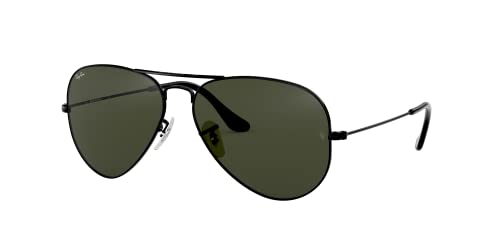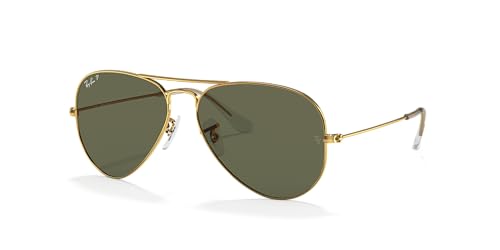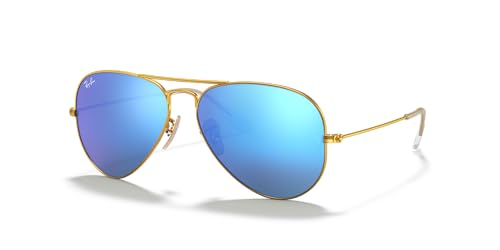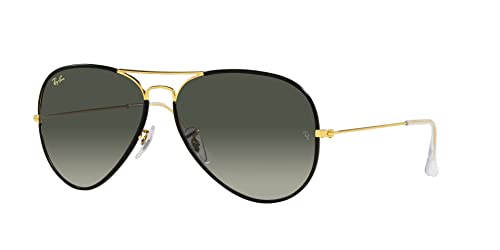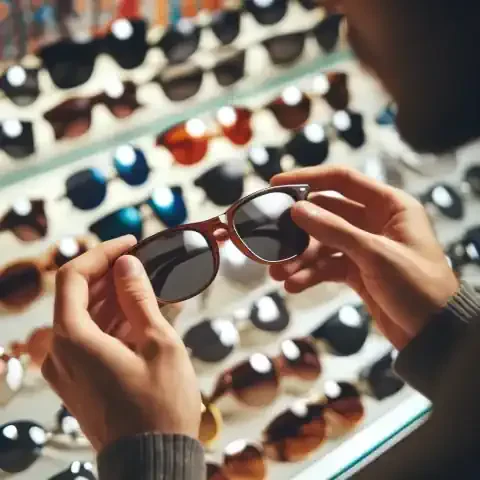Introduction
Sunglasses have become more than just a fashion accessory; they are an essential tool for protecting our eyes from harmful ultraviolet (UV) radiation and minimizing glare. As we step into the brightness of the day, sunglasses serve as our guardians, shielding our eyes from the harshness of sunlight and providing comfort and clarity in various activities.
Importance of Sunglasses
Beyond just style, sunglasses play a crucial role in safeguarding our eye health. Prolonged exposure to UV radiation can lead to various eye conditions, including cataracts, macular degeneration, and even certain types of cancer. By wearing sunglasses with proper UV protection, we can significantly reduce the risk of developing these issues and maintain the long-term health of our eyes.
Brief History of Sunglasses
The journey of sunglasses spans centuries, from their humble beginnings as tinted lenses crafted from natural materials to the sleek, high-tech designs of today. Sunglasses have evolved alongside human civilization, initially used by ancient civilizations like the Inuit and Chinese to reduce glare from snow and water. Over time, sunglasses transitioned from functional tools to status symbols, becoming synonymous with style and sophistication in modern culture.
Purpose of the Article
In this article, we delve into the multifaceted world of sunglasses, exploring their scientific significance, practical benefits, and fashion evolution. Whether you're a seasoned sunglasses aficionado or someone looking to invest in their first pair, this comprehensive guide aims to provide valuable insights into choosing the right sunglasses for your needs, understanding their protective properties, staying updated on the latest trends, and maintaining them for optimal performance and longevity. By the end of this article, you'll be equipped with the knowledge and confidence to make informed decisions about selecting and caring for your sunglasses, ensuring both style and protection for your eyes.
The Science Behind Sunglasses
Ultraviolet (UV) Radiation and Eye Health
Ultraviolet (UV) radiation emitted by the sun is invisible to the human eye but poses significant risks to our health, especially to our eyes. UV radiation can cause a range of eye conditions, including cataracts, macular degeneration, and even cancer of the eyelids or skin around the eyes. It's crucial to understand that UV exposure accumulates over time, meaning consistent protection is necessary to prevent long-term damage.
Types of UV Radiation (UVA, UVB, UVC)
There are three main types of UV radiation: UVA, UVB, and UVC. UVA rays have the longest wavelength and can penetrate deep into the eye, contributing to premature aging and increasing the risk of cataracts and macular degeneration. UVB rays are shorter in wavelength and primarily affect the outer layers of the eye, causing sunburns on the cornea and contributing to the development of cataracts and certain types of eye cancers. UVC rays are absorbed by the Earth's atmosphere and are typically not a concern for eye health.
How Sunglasses Protect Eyes
Sunglasses act as a barrier between our eyes and harmful UV radiation. High-quality sunglasses are designed to block 100% of UVA and UVB rays, providing comprehensive protection for the eyes. The lenses of sunglasses are specially treated or coated to absorb or reflect UV rays, preventing them from reaching the eyes. Additionally, sunglasses with wraparound designs or larger lenses offer better coverage by reducing the amount of UV radiation that can enter from the sides or top of the glasses.
Other Benefits of Sunglasses (Glare Reduction, Blue Light Filtering)
In addition to UV protection, sunglasses offer several other benefits for eye comfort and visual clarity. One significant advantage is glare reduction, particularly useful when engaging in outdoor activities such as driving or water sports. Glare occurs when sunlight reflects off surfaces like water, snow, or pavement, causing discomfort and visual distractions. Polarized sunglasses, in particular, are effective at reducing glare by blocking horizontally polarized light, resulting in enhanced visibility and reduced eye strain.
Furthermore, certain sunglasses lenses are designed to filter out blue light, a high-energy wavelength of light that can contribute to digital eye strain and disrupt sleep patterns. Blue light-filtering lenses help to minimize exposure to blue light emitted by electronic devices like smartphones, computers, and tablets, promoting more comfortable and healthier vision, especially for individuals who spend extended periods in front of screens.
In summary, sunglasses offer more than just style; they are indispensable tools for protecting our eyes from UV radiation, reducing glare, and filtering out harmful blue light. By investing in high-quality sunglasses with proper UV protection and additional features tailored to your needs, you can safeguard your eye health and enjoy clearer, more comfortable vision in any environment.
Choosing the Right Sunglasses
Understanding Lens Materials (Polycarbonate, CR-39, Glass)
When selecting sunglasses, one of the essential factors to consider is the lens material. Each material offers different benefits in terms of durability, optical clarity, and weight.
Polycarbonate: Polycarbonate lenses are lightweight, impact-resistant, and ideal for sports or outdoor activities where durability is crucial. They also provide excellent protection against UV radiation.
CR-39: CR-39 lenses are lightweight and offer excellent optical clarity, making them a popular choice for prescription sunglasses. However, they are not as impact-resistant as polycarbonate lenses.
Glass: Glass lenses provide superior optical clarity and scratch resistance but are heavier and more prone to breakage than other materials. They are often found in high-end sunglasses.
Non-Polarized Lenses
While polarized lenses are excellent for reducing glare, non-polarized lenses may be preferred in certain situations. Non-polarized lenses do not interfere with the visibility of digital screens and can be more suitable for activities like driving or flying, where polarization may affect the ability to read instrument panels or LCD displays.
Frame Styles and Materials (Aviator, Wayfarer, Wraparound, Plastic, Metal)
The frame style and material play a significant role in both the aesthetics and functionality of sunglasses.
Aviator: Aviator sunglasses feature a classic teardrop shape with thin metal frames and large lenses. They offer a timeless look and provide good coverage against sunlight.
Wayfarer: Wayfarer sunglasses are characterized by their trapezoidal frames and thick temples. They are versatile and suit a wide range of face shapes.
Wraparound: Wraparound sunglasses have curved frames that wrap closely around the face, providing maximum coverage and protection against peripheral light.
Plastic: Plastic frames are lightweight and come in a variety of colors and styles. They are a popular choice for casual and fashion-forward sunglasses.
Metal: Metal frames are durable and offer a sleek, sophisticated look. They are often preferred for classic and aviator-style sunglasses.
Proper Fit and Comfort Considerations
Ensuring proper fit is essential for both comfort and effectiveness in protecting your eyes. When trying on sunglasses, consider the following:
The sunglasses should sit comfortably on the bridge of your nose without pinching or sliding down.
The temples should rest lightly on your ears without pressing too tightly.
The frames should not touch your cheeks or eyebrows.
Special Features (Scratch Resistance, Anti-Reflective Coating)
Some sunglasses come with additional features to enhance durability and visual clarity:
Scratch Resistance: Scratch-resistant coatings help to protect the lenses from minor scratches, extending their lifespan and maintaining optical clarity.
Anti-Reflective Coating: Anti-reflective coatings reduce glare and reflections on the front and back surfaces of the lenses, improving visibility, especially in bright sunlight or low-light conditions.
By considering factors such as lens materials, frame styles, fit, and special features, you can choose sunglasses that not only complement your style but also provide optimal protection and comfort for your eyes.
Trends and Fashion
Historical Evolution of Sunglasses Styles
The evolution of sunglasses styles is a fascinating journey through time, reflecting changes in technology, culture, and fashion trends. From the early tinted lenses crafted by ancient civilizations to the iconic designs of the 20th century, sunglasses have continually evolved to meet the demands of style and function.
Throughout history, sunglasses have been influenced by various factors, including practical needs such as glare reduction for outdoor activities and fashion movements that celebrate individuality and self-expression. Each era has brought forth distinctive styles, from the glamorous cat-eye sunglasses of the 1950s to the oversized, futuristic frames of the 1980s.
Current Fashion Trends in Sunglasses
In the present day, sunglasses trends continue to evolve, with designers and brands pushing the boundaries of creativity and innovation. Some of the current fashion trends in sunglasses include:
Retro Revival: Vintage-inspired designs such as round frames, aviators, and oversized square shapes are making a comeback, adding a touch of nostalgia to modern wardrobes.
Bold Colors and Patterns: Bright, vibrant hues and playful patterns are popular choices for adding a pop of personality to sunglasses frames, reflecting a sense of optimism and individuality.
Minimalist Chic: Clean lines, understated designs, and neutral tones are favored by those who appreciate minimalist aesthetics and timeless elegance.
Sustainable Materials: There is a growing emphasis on sustainability in fashion, leading to an increase in sunglasses made from eco-friendly materials such as recycled plastics, wood, and bio-based acetate.
Celebrities and Influences on Sunglasses Fashion
Celebrities have long been influential in shaping sunglasses fashion, with iconic figures from film, music, and fashion setting trends and making bold statements with their eyewear choices. From Audrey Hepburn's timeless elegance in "Breakfast at Tiffany's" to the edgy appeal of Kanye West's shutter shades, celebrities often serve as trendsetters, driving demand for specific styles and brands.
Social media platforms like Instagram have further amplified the influence of celebrities and influencers, providing a platform for showcasing the latest sunglasses styles and inspiring millions of followers to emulate their favorite stars' looks.
Sustainable and Eco-Friendly Sunglasses Options
As awareness of environmental issues grows, consumers are increasingly seeking out sustainable and eco-friendly options in all aspects of their lives, including fashion. In the realm of sunglasses, eco-conscious brands are leading the way by using recycled materials, reducing waste in production processes, and implementing ethical manufacturing practices.
Sustainable sunglasses options may include frames made from recycled plastics, reclaimed wood, or biodegradable materials, as well as eco-friendly packaging and carbon-neutral shipping practices. These initiatives not only reduce the environmental impact of sunglasses production but also offer consumers the opportunity to make socially responsible choices without sacrificing style or quality.
In conclusion, the world of sunglasses fashion is as dynamic and diverse as ever, with trends influenced by history, culture, celebrities, and environmental consciousness. Whether embracing retro styles or embracing cutting-edge innovations, sunglasses continue to be a powerful form of self-expression and a reflection of personal style in an ever-changing world.
Sunglasses for Different Activities
Whether you're hitting the trails for a trail run, teeing off on the golf course, or cruising down the highway, choosing the right sunglasses for your activity is essential for both performance and protection. Here's a guide to selecting sunglasses tailored to specific activities:
Sports Sunglasses (Running, Cycling, Golf, Water Sports)
Sports sunglasses are designed to withstand the rigors of active pursuits while providing optimal vision and eye protection. Key features to look for in sports sunglasses include:
Lightweight and durable frames: Sports sunglasses should be comfortable to wear for extended periods without causing discomfort or slipping during high-intensity activities.
Impact-resistant lenses: Look for lenses made from materials like polycarbonate or Trivex, which are highly resistant to impact and shattering, reducing the risk of injury during sports.
Wraparound design: Sunglasses with a wraparound design provide better coverage and protection against wind, debris, and peripheral light, enhancing visibility and reducing eye strain.
Non-slip nose pads and temple grips: These features help keep the sunglasses securely in place, even when sweating or moving vigorously.
Polarized lenses (optional): Polarized lenses can help reduce glare from reflective surfaces like water or pavement, improving visibility and reducing eye strain, but they may not be suitable for all sports.
Driving Sunglasses
Driving sunglasses are specially designed to enhance visibility and reduce glare while behind the wheel. Key features to consider when choosing driving sunglasses include:
Polarized lenses: Polarized lenses are highly effective at reducing glare from the sun, headlights, and reflective surfaces on the road, providing clearer vision and reducing eye strain during long drives.
Amber or brown tint: Sunglasses with amber or brown tinted lenses enhance contrast and depth perception, making it easier to see objects and obstacles on the road.
Anti-reflective coatings: Anti-reflective coatings on the lenses minimize reflections and glare from the front and back surfaces of the lenses, improving visibility and reducing distractions while driving.
Function: Finding the Right Balance
When selecting sunglasses for any activity, it's essential to find the right balance between functionality and style. While performance features such as UV protection, impact resistance, and glare reduction are crucial for eye health and safety, aesthetics also play a significant role in choosing sunglasses that complement your personal style and preferences.
Consider factors such as frame shape, color, and material, as well as special features like scratch resistance, anti-reflective coatings, and interchangeable lenses to tailor your sunglasses to your specific needs and activities.
Ultimately, the best sunglasses are ones that offer a perfect blend of functionality, comfort, and style, allowing you to enjoy clear vision and optimal eye protection in any situation. By carefully selecting sunglasses tailored to your activities and lifestyle, you can ensure both performance and fashion without compromising on quality or safety.
Caring for Your Sunglasses
Proper care and maintenance are essential for preserving the quality and longevity of your sunglasses. By following these simple guidelines, you can ensure that your sunglasses remain in excellent condition for years to come:
Cleaning Techniques
Regular cleaning helps remove dirt, oil, and debris from your sunglasses, ensuring clear vision and preventing damage to the lenses and frames. Here are some cleaning techniques to keep your sunglasses looking their best:
Use a gentle lens cleaner: Apply a small amount of mild dish soap or specialized lens cleaner to a clean, lint-free cloth or microfiber towel.
Gently wipe the lenses: Use gentle, circular motions to clean the lenses, starting from the center and working your way outward. Avoid using excessive pressure, as this could scratch the lenses.
Clean the frames: Wipe down the frames and temples with the same cloth, paying attention to any dirt or residue that may have accumulated.
Rinse with water: Rinse the lenses and frames under lukewarm water to remove any remaining soap or cleaner residue.
Dry thoroughly: Use a clean, dry cloth to gently pat the lenses and frames dry. Avoid using paper towels or tissues, as these may leave behind lint or scratches.
Proper Storage
Proper storage helps protect your sunglasses from damage and prolongs their lifespan. Follow these tips to store your sunglasses safely when not in use:
Use a protective case: Store your sunglasses in a sturdy case when not wearing them to prevent scratches, dents, or other damage.
Avoid exposure to extreme temperatures: Do not leave your sunglasses in hot cars or direct sunlight for extended periods, as excessive heat can warp the frames or cause the lenses to delaminate.
Keep away from moisture: Avoid storing your sunglasses in damp or humid environments, as moisture can lead to mold growth or corrosion of metal components.
Store in a clean, dry place: Choose a clean, dry area to store your sunglasses, away from dust, dirt, or other potential contaminants.
Maintenance Tips for Longevity
Regular maintenance helps keep your sunglasses in top condition and ensures optimal performance. Here are some maintenance tips to prolong the lifespan of your sunglasses:
Check for loose screws: Periodically inspect the hinges and screws on your sunglasses to ensure they are tight and secure. Use a small screwdriver to tighten any loose screws as needed.
Avoid bending or twisting the frames: Handle your sunglasses with care and avoid bending or twisting the frames, as this can weaken the structure and cause misalignment.
Replace worn-out components: If the nose pads, temple tips, or other components of your sunglasses become worn or damaged, consider replacing them to maintain comfort and functionality.
Schedule regular professional cleanings: Consider taking your sunglasses to a professional optician or eyewear retailer for periodic cleanings and adjustments to ensure they remain in optimal condition.
By following these care and maintenance tips, you can keep your sunglasses looking great and performing their best for years to come, ensuring clear vision and protection for your eyes in any environment.
Frequently Asked Questions about Sunglasses
1. Do darker lenses provide better UV protection?
Contrary to popular belief, the darkness of the lenses does not necessarily correlate with the level of UV protection provided by sunglasses. UV protection is determined by the lens material and coatings rather than the tint color. In fact, darker lenses without proper UV protection can be more harmful as they dilate the pupils, allowing more UV rays to enter the eyes. Always look for sunglasses that offer 100% UV protection, regardless of the lens tint.
2. Can sunglasses prevent eye diseases like cataracts and macular degeneration?
While sunglasses cannot prevent eye diseases like cataracts and macular degeneration outright, they can significantly reduce the risk of developing these conditions by blocking harmful UV radiation. Prolonged exposure to UV rays is a known risk factor for cataracts, macular degeneration, and other eye disorders. Wearing sunglasses with proper UV protection helps shield the eyes from UV damage and may contribute to maintaining long-term eye health.
3. How often should sunglasses be replaced?
The lifespan of sunglasses varies depending on factors such as usage, care, and exposure to environmental elements. As a general guideline, it is recommended to replace sunglasses every 1 to 2 years, or sooner if they show signs of damage, wear, or loss of effectiveness. Scratched or damaged lenses may compromise UV protection and visual clarity, while worn-out frames may not provide proper fit or stability. Regularly assessing the condition of your sunglasses and replacing them as needed helps ensure optimal eye protection and comfort.
4. Are expensive sunglasses worth the investment?
The value of expensive sunglasses depends on various factors, including brand reputation, materials, features, and personal preferences. While high-end sunglasses often boast superior craftsmanship, innovative technologies, and designer aesthetics, they may not necessarily offer better UV protection or performance than more affordable options. Ultimately, the decision to invest in expensive sunglasses comes down to individual priorities and budget considerations. Regardless of the price point, prioritize sunglasses that offer 100% UV protection and meet your specific needs for comfort, style, and functionality.
Sunglasses
As we conclude our exploration into the world of sunglasses, it's important to reflect on the significance of these seemingly simple accessories and the impact they have on our eye health and overall well-being.
Recap of the Importance of Sunglasses
Sunglasses serve as more than just a fashion statement; they are essential tools for protecting our eyes from the harmful effects of ultraviolet (UV) radiation. By blocking UV rays and reducing glare, sunglasses help prevent a range of eye conditions, including cataracts, macular degeneration, and even certain types of cancer. Investing in high-quality sunglasses with proper UV protection is an investment in your long-term eye health.
Final Tips for Selecting and Maintaining Sunglasses
When selecting sunglasses, prioritize functionality, comfort, and style. Look for sunglasses that offer 100% UV protection, durable materials, and features tailored to your specific needs and activities. Proper maintenance, including regular cleaning, storage in a protective case, and periodic inspections for damage or wear, will help prolong the lifespan of your sunglasses and ensure optimal performance.
Encouragement for Readers to Prioritize Eye Health through Sunglass Use
As you venture out into the world, remember to prioritize your eye health by wearing sunglasses whenever you are exposed to sunlight. Whether you're lounging on the beach, hiking in the mountains, or simply running errands around town, make sunglasses an essential part of your daily routine. By protecting your eyes from UV radiation and reducing glare, you're not only safeguarding your vision but also setting a positive example for others to follow.
In the journey of life, our eyes are our windows to the world. Let's cherish and protect them with the care and attention they deserve. Together, let's make sunglasses not just a fashion accessory, but a symbol of our commitment to health, happiness, and the beauty of seeing the world through clear, protected eyes.

